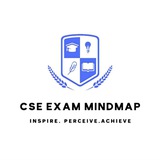insightsonindia.com-Shankaracharya Temple.pdf
314.6 KB
🔱 Shankaracharya Temple, Kashmir
📍 Location & Elevation
✅ Situated on the Zabarwan Range in Srinagar, Jammu & Kashmir.
✅ Stands at an elevation of 1100 feet above sea level.
✅ Dedicated to Lord Shiva, making it an important center of Shaivism.
📜 Historical Significance
✅ Named after Adi Shankaracharya, who visited the site and revived Advaita Vedanta (Non-dualism).
✅ Believed to have been originally built by Jaluka (son of Ashoka) and later renovated by Lalitaditya Muktapida of the Karkota dynasty.
✅ Persian inscriptions suggest renovations by Mughal Emperor Shah Jahan in the 17th century.
✅ One of the oldest Hindu shrines in Kashmir, deeply tied to Shaivism traditions.
🔗 Adi Shankaracharya’s Contributions
✅ Revival of Hinduism: Established four mathas in Dwarka, Joshimath, Puri, and Sringeri.
✅ Key Philosophical Works:
•Bhaja Govindam – Philosophical teachings in poetic form.
•Bhashyas (Commentaries) – On the Vedas, Upanishads, Bhagavad Gita, and Brahma Sutras.
•Advaita Vedanta – Stressed the unity of Atman (soul) with Brahman (supreme reality).
📰 Recent Updates
✅ PM Modi visited the temple, highlighting its spiritual and cultural significance.
✅ The temple is being developed under the PRASAD scheme to boost religious tourism in Kashmir.
🔖 #ShankaracharyaTemple #Kashmir #AdiShankaracharya #SanatanDharma #IndianHeritage #AdvaitaVedanta #SpiritualIndia
📍 Location & Elevation
✅ Situated on the Zabarwan Range in Srinagar, Jammu & Kashmir.
✅ Stands at an elevation of 1100 feet above sea level.
✅ Dedicated to Lord Shiva, making it an important center of Shaivism.
📜 Historical Significance
✅ Named after Adi Shankaracharya, who visited the site and revived Advaita Vedanta (Non-dualism).
✅ Believed to have been originally built by Jaluka (son of Ashoka) and later renovated by Lalitaditya Muktapida of the Karkota dynasty.
✅ Persian inscriptions suggest renovations by Mughal Emperor Shah Jahan in the 17th century.
✅ One of the oldest Hindu shrines in Kashmir, deeply tied to Shaivism traditions.
🔗 Adi Shankaracharya’s Contributions
✅ Revival of Hinduism: Established four mathas in Dwarka, Joshimath, Puri, and Sringeri.
✅ Key Philosophical Works:
•Bhaja Govindam – Philosophical teachings in poetic form.
•Bhashyas (Commentaries) – On the Vedas, Upanishads, Bhagavad Gita, and Brahma Sutras.
•Advaita Vedanta – Stressed the unity of Atman (soul) with Brahman (supreme reality).
📰 Recent Updates
✅ PM Modi visited the temple, highlighting its spiritual and cultural significance.
✅ The temple is being developed under the PRASAD scheme to boost religious tourism in Kashmir.
🔖 #ShankaracharyaTemple #Kashmir #AdiShankaracharya #SanatanDharma #IndianHeritage #AdvaitaVedanta #SpiritualIndia
🔥1
🔆 Resolving Ethical Dilemma in Governance (UPSC 2018)
📍 Ethical dilemma can be solved by keeping following key aspects in mind:
✅ The Rule of Law and Legality: The rule of law is essential in politics and society, and adhering to the principles of legitimacy is crucial when exercising authority. The law sets the minimum ethical standard and aids decision-making during ethical dilemmas.
✅ Giving Priority to the Public Interest: Public officials should prioritize the public’s welfare over their own self-interest when making decisions or taking actions.
✅ Impartiality: Public servants should remain unbiased when faced with ethical dilemmas and make decisions without favouritism.
✅ Thorough Assessment: Ethical dilemmas should be carefully evaluated by considering all available options and selecting the decision that maximises the well-being of the majority.
✅ Fusion: Integrating individual, organisational, and societal goals helps alleviate ethical dilemmas, as a suitable choice can align with all these objectives.
📍 Ethical dilemma can be solved by keeping following key aspects in mind:
✅ The Rule of Law and Legality: The rule of law is essential in politics and society, and adhering to the principles of legitimacy is crucial when exercising authority. The law sets the minimum ethical standard and aids decision-making during ethical dilemmas.
✅ Giving Priority to the Public Interest: Public officials should prioritize the public’s welfare over their own self-interest when making decisions or taking actions.
✅ Impartiality: Public servants should remain unbiased when faced with ethical dilemmas and make decisions without favouritism.
✅ Thorough Assessment: Ethical dilemmas should be carefully evaluated by considering all available options and selecting the decision that maximises the well-being of the majority.
✅ Fusion: Integrating individual, organisational, and societal goals helps alleviate ethical dilemmas, as a suitable choice can align with all these objectives.
❤2
